VERY RARE! WWII 1945 Invasion of Luzon Japanese Surrender Leaflet Sixth Army (MINT CONDITION)
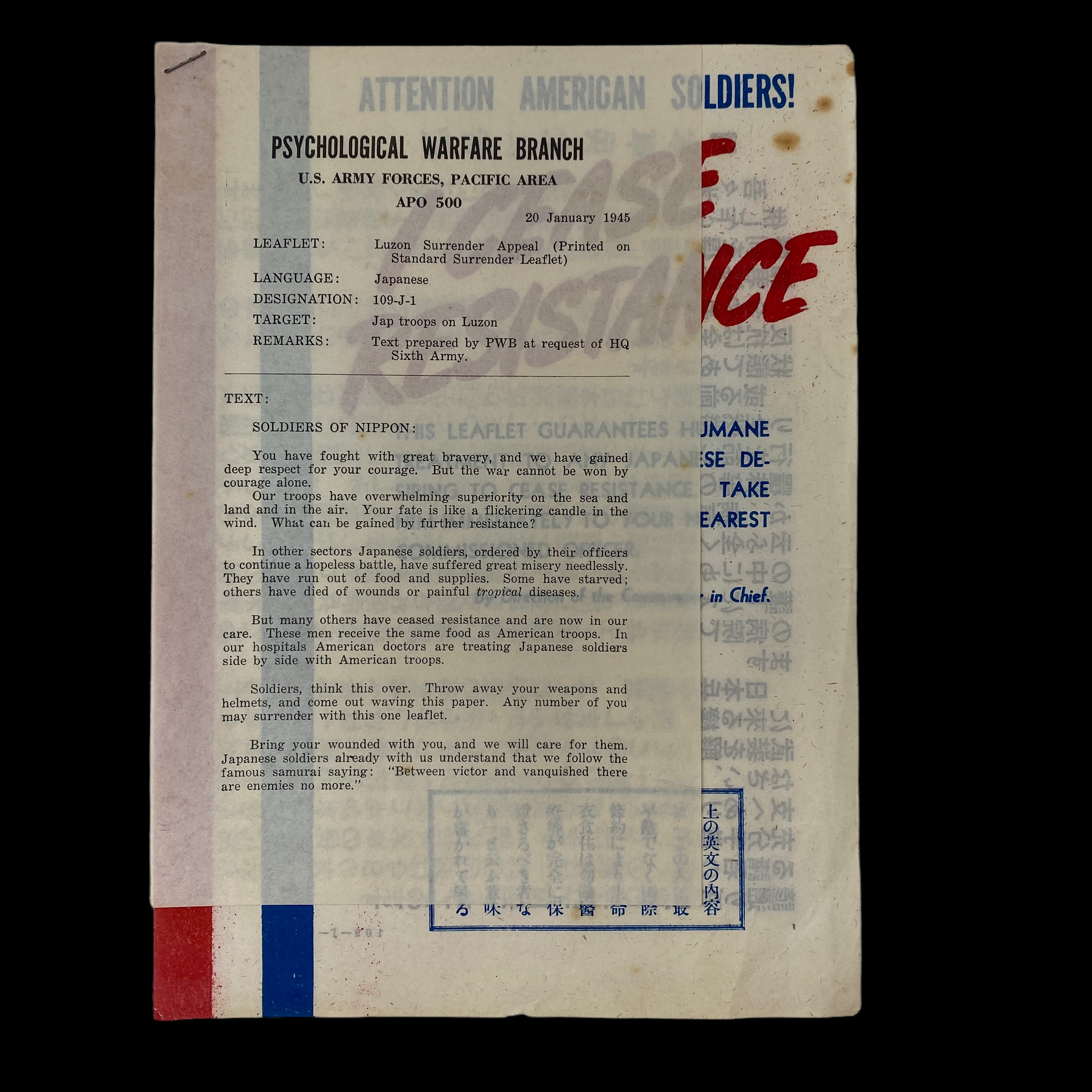

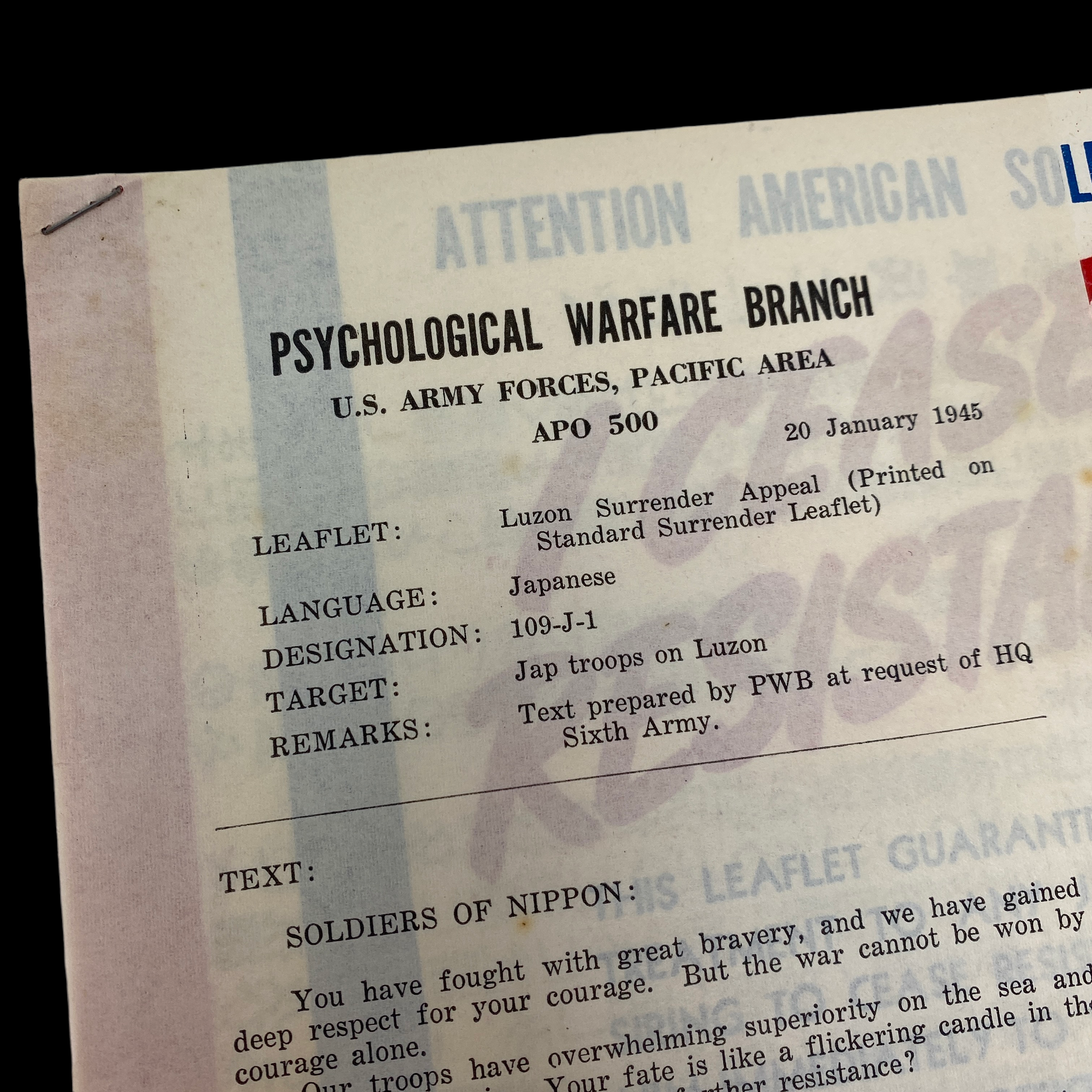

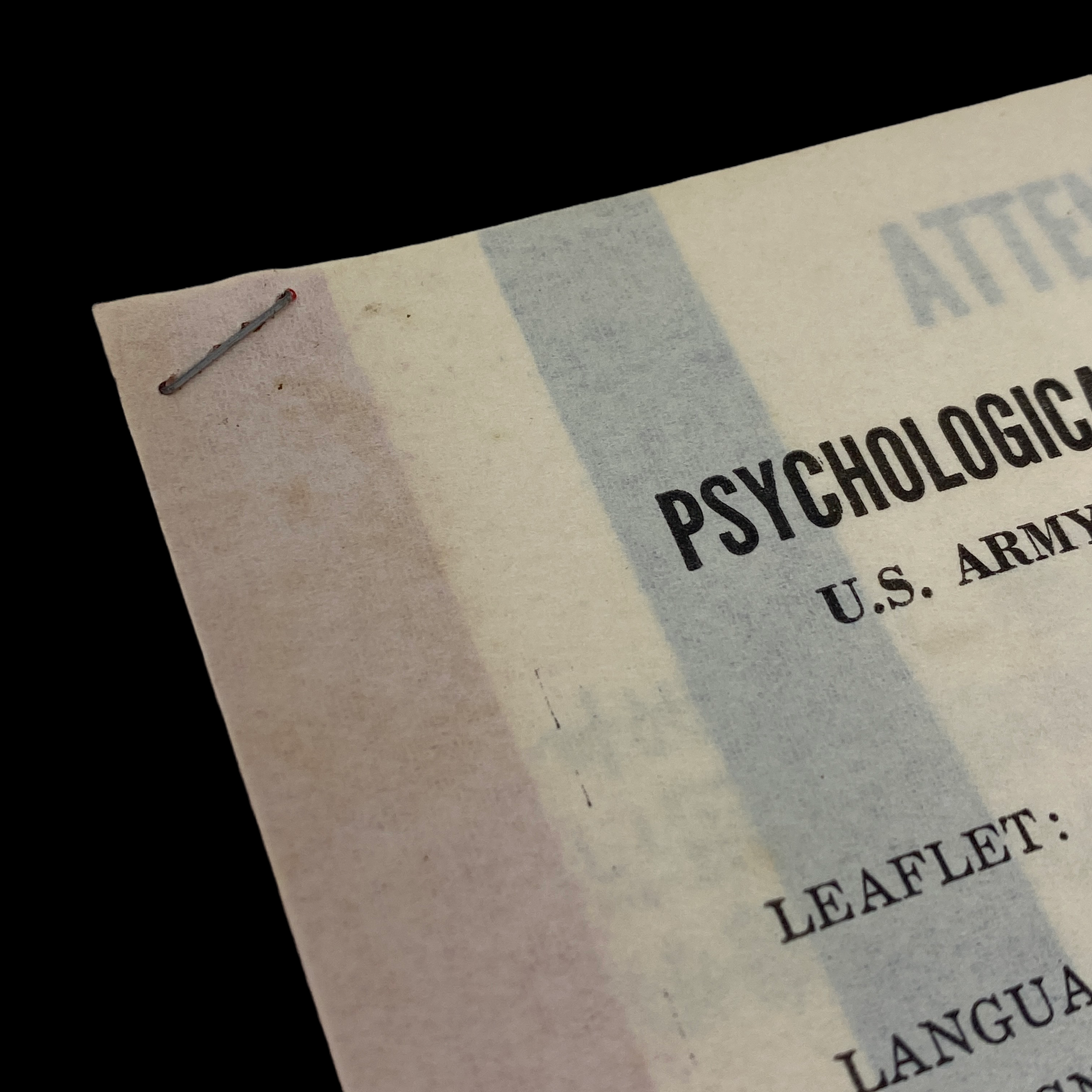
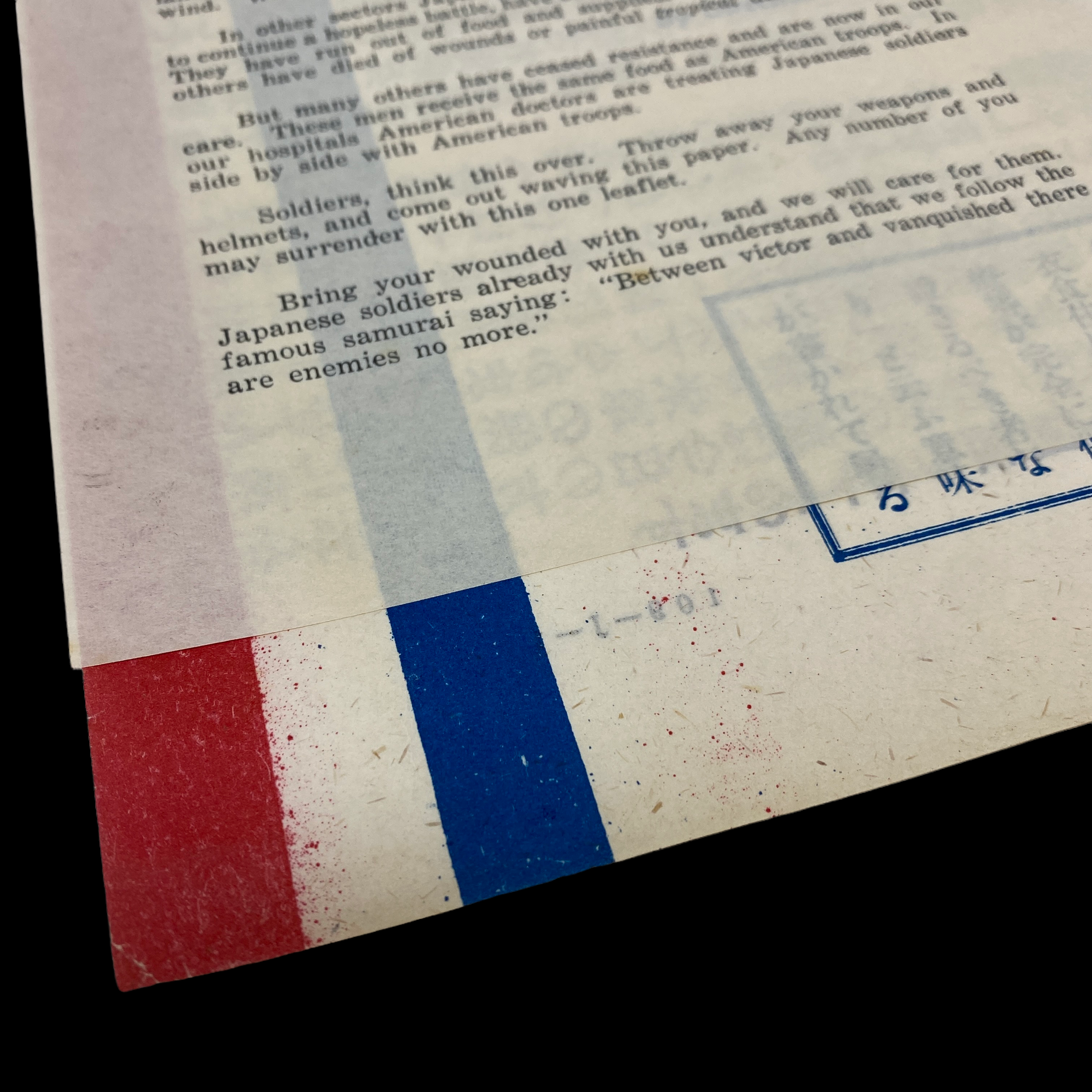
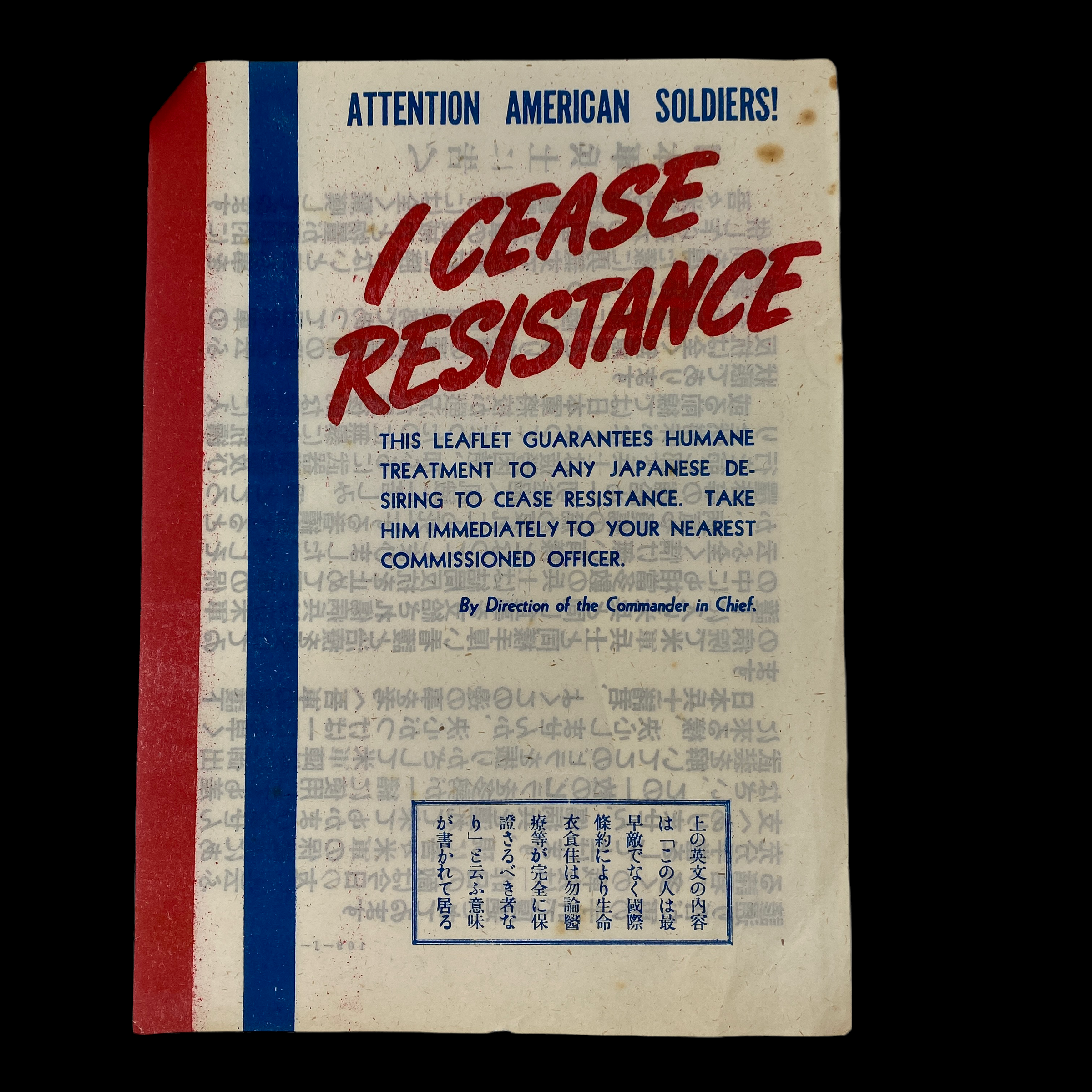
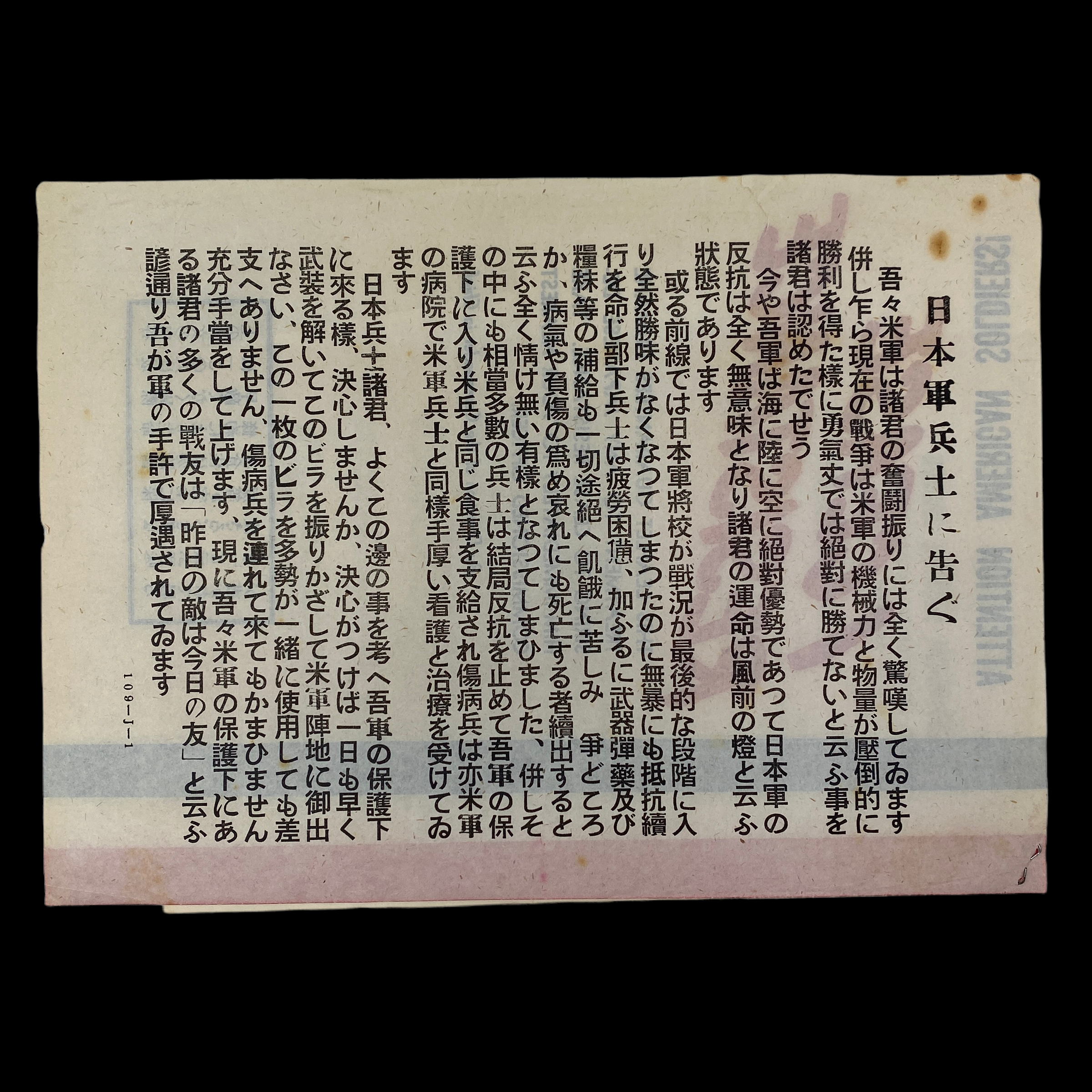

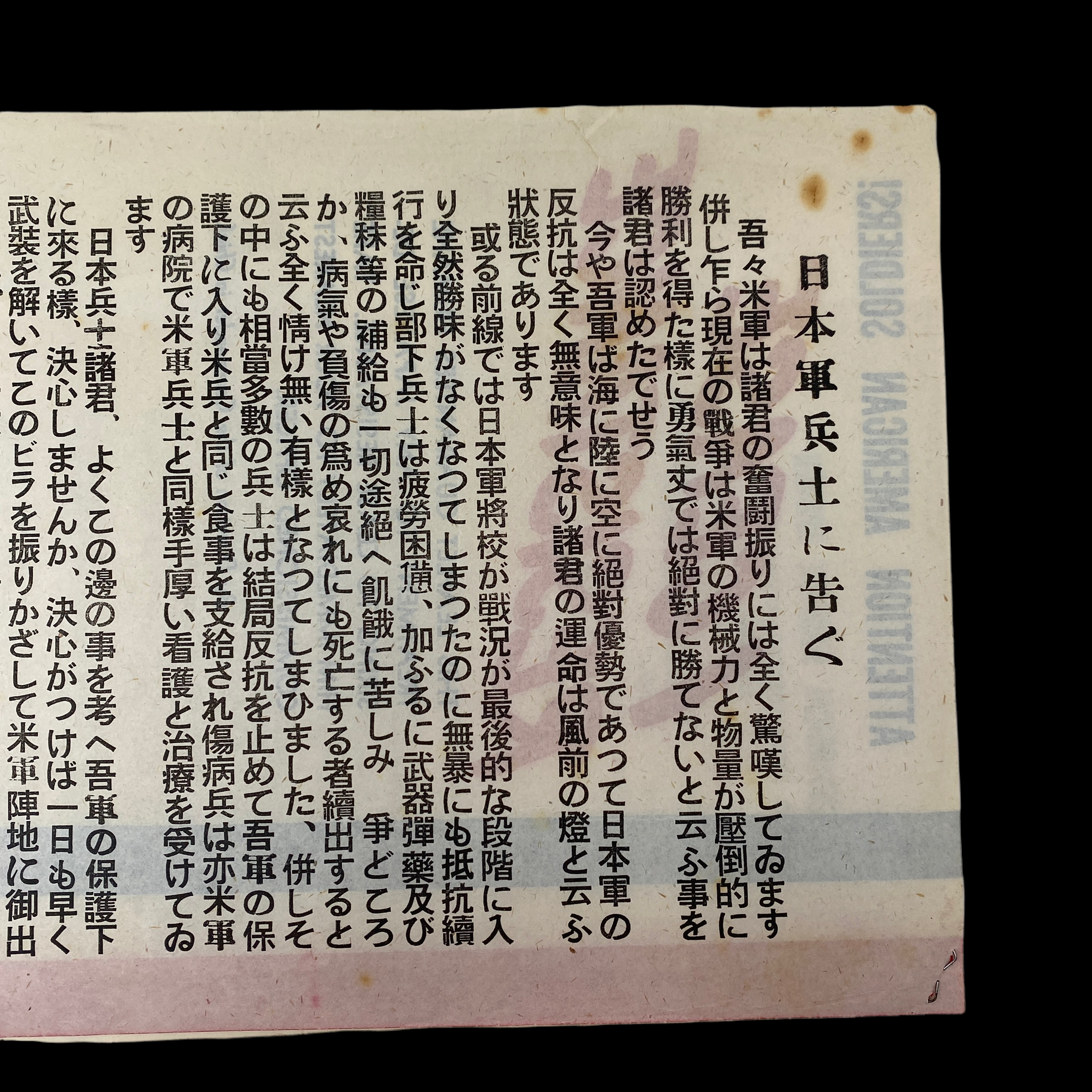
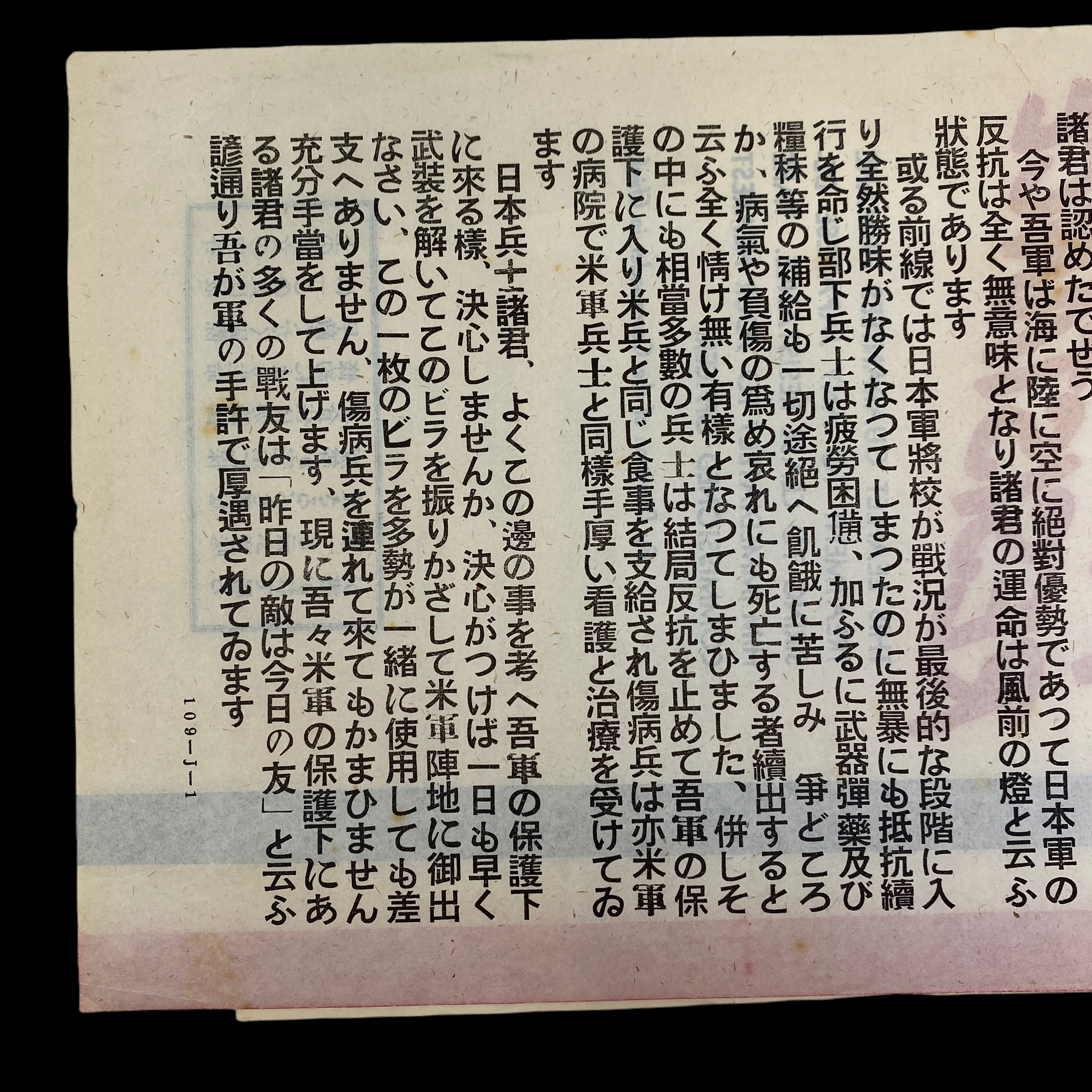
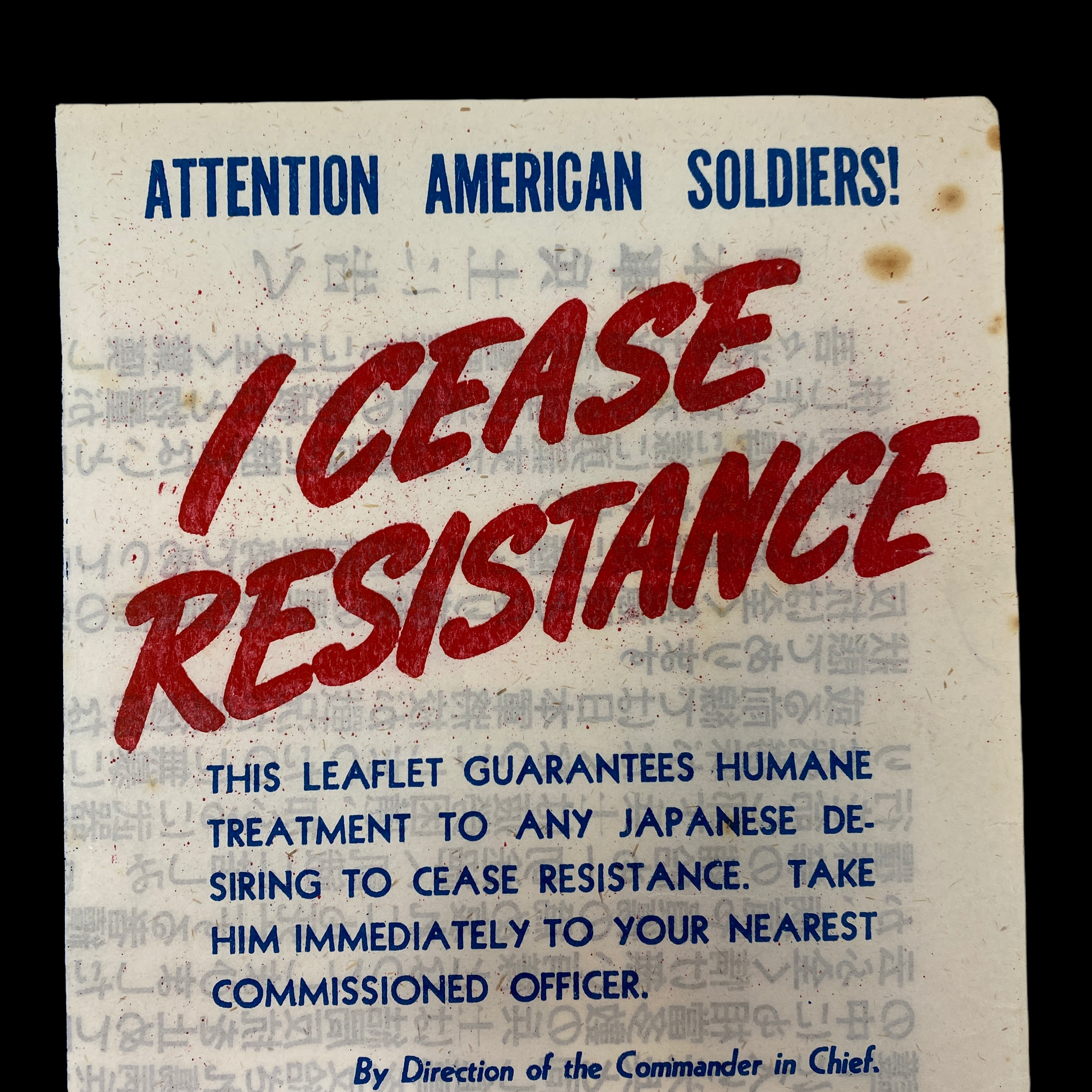
VERY RARE! WWII 1945 Invasion of Luzon Japanese Surrender Leaflet Sixth Army (MINT CONDITION)
Comes with hand-signed C.O.A.
This incredibly rare and museum-grade first print edition WWII Luzon surrender leaflet (designation 109-J-1) comes directly from the Psychological Warfare Branch - U.S. Army Pacific Area. What makes this particular double-sided Japanese surrender leaflet incredibly scare is that this leaflet contains the original and extremely delicate rice paper translation sheet prepared by the PWB at request of the HQ Sixth Army. These original Psychological Warfare Branch rice paper translations are almost impossible to find, yet alone still attached to the original first edition print leaflets (with the original staple).
Dated January 20th, 1945 this leaflet was specifically created and is marked “TARGET: JAP TROOPS ON LUZON”. Gen. Douglas MacArthur and the American 6th Army land on the Lingayen Gulf of Luzon, another step in the capture of the Philippine Islands from the Japanese. These sheets with the original Psychological Warfare Branch rice paper were used and dropped during this exact invasion.
In our experience with propaganda and surrender leaflets of WWII…this is the ONLY surrender leaflet with the original Psychological Warfare Branch rice paper documenting sheet we have ever seen. Making this the only one of this specific Luzon surrender leaflet in the world known to exist.
The Japanese controlled the Philippines from May 1942, when the defeat of American forces led to General MacArthur’s departure and Gen. Jonathan Wainwright’s capture. But in October 1944, more than 100,000 American soldiers landed on Leyte Island to launch one of one of the bloodiest battles of the Pacific war—and herald the beginning of the end for Japan.
Newsreels captured the event as MacArthur waded ashore at Leyte on October 20, returning to the Philippines as he had famously promised he would after the original defeat of American forces there. What the newsreels didn’t capture were the 67 days it took to subdue the island, with the loss of more than 55,000 Japanese soldiers during the two months of battle and approximately 25,000 more soldiers killed in smaller-scale engagements necessary to fully clear the area of enemy troops. The U.S. forces lost about 3,500.
The sea battle of Leyte Gulf was the same story. The loss of ships and sailors was horrendous for both sides. That battle also saw the introduction of the Japanese kamikaze suicide bombers. More than 5,000 kamikaze pilots died in this gulf battle, taking down 34 ships. But the Japanese were not able to prevent the loss of their biggest and best warships, which meant the virtual end of the Japanese Imperial Fleet.
These American victories on land and sea at Leyte opened the door for the landing of more than 60,000 American troops on Luzon on January 9. Once again, cameras recorded MacArthur walking ashore, this time to greet cheering Filipinos. Although the American troops met little opposition when they landed, the light cruiser Columbia and the battleship Mississippi were hit by kamikazes, resulting in the deaths of 49 American crewmen.
The initial ease of the American fighters’ first week on land was explained when they discovered the intricate defensive network of caves and tunnels that the Japanese created on Luzon. The intention of the caves and tunnels was to draw the Americans inland, while allowing the Japanese to avoid the initial devastating bombardment of an invasion force. Once Americans reached them, the Japanese fought vigorously, convinced they were directing American strength away from the Japanese homeland. Despite their best efforts, the Japanese lost the battle for Luzon and eventually, the battle for control over all of the Philippines.